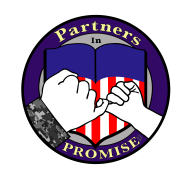
IEPs vs. 504 Plans – The Main Differences Debunked
| 504 Plan, Development Of The IEP, IEP
My first special education teaching position was in a fourth-grade “collaborative” setting. I worked alongside a general education teacher to instruct children with and without Individualized Education Programs also known as IEPs. One of the most eye-opening components of collaborative teaching was the diversity in which we can offer educational opportunities to students. My students with IEPs had a wide range of abilities and needs, my students with 504 plans also had varied needs met by accommodations, and my students without plans presented their own sets of strengths and weaknesses. I was fortunate to be in a location that catered to the strengths and met the needs of all of these bright and unique students and helped me see the differences between IEPs vs. 504 Plans.
Written By Jessica Monteverde
The collaborative processes allowed for my co-teacher and me to have many brainstorming sessions on how to best meet the needs of our students. We frequently discussed the process of evaluations and the difference between IEPs vs. 504 Plans. We took these plans and translated written words into daily actions. I asked many questions to my veteran co-workers! That being said, the differences between IEPs vs. 504 Plans can be exceedingly perplexing for parents, who may not have access to the same professional expertise. The processes, verbiage and ever-changing ideology can leave a parent throwing their arms up in dismay. Here is a breakdown of the differences between each plan and when one option may outweigh the other.
A few things to keep in mind before diving into the specifics:
- Your child only needs one plan-never both. As we will see, everything that is covered in a 504 plan is embedded within an IEP. However, your child can start with an IEP and then move to a 504 plan or the reverse.
- Both of these plans are developed by a team to include the parent. You belong in the conversation! Your knowledge of YOUR child is immeasurable.
- One plan is not necessarily better than the other. It is all based on what a child NEEDS.
IEPs vs. 504 Plans the Main Differences
| Individualized Education Plan (IEP) | Section 504 Plan | |
| Covered by which Law? | The Individuals with Disabilities Education Act (IDEA) | The Rehabilitation Act of 1973 |
| Made for who? | Students qualify for services through 13 different disability categories | Students have a diagnosis of a disability/impairment that limits functioning |
| Why/What is included? | There must be an educational need-the disability limits the child’s access to their education. Provides SPECIALIZED instruction and services: Goals, services, and placement. | There is a need present that inhibits the child/adult from fully performing in the educational or work setting. Provides accommodations and tools so the person can access his education alongside his peers. |
| What’s the timeline? | Limited Time: Varies by state. Learn more HERE | No Time Limit (many people have a 504 plan that must be followed in college and the workplace) |
The greatest difference between the plans is the education itself. An IEP provides specialized instruction and services (small group, specialized curriculum, etc.) to prepare a child for further education, employment and independent living per IDEA. Whereas with a 504 plan, a child receives the same instruction as his peers and uses different tools to meet unique needs.
IEPs vs. 504 Plans – Examples

In order to qualify for special education, an IEP must determine that there is an educational need and the child requires specialized instruction and services to access their education. To “access their education” means to make growth, the child requires an Individualized Education Program. They need more than their peers to make growth. An IEP includes annual goals, services (special education instruction, speech therapy, occupational therapy, physical therapy, etc) and placement (the setting in which the child will receive their instruction). It also includes accommodations that the team will provide the student to access their education more fully. Accommodations are simply tools that the IEP team provides a student to enable their success within their instruction. Some examples of accommodations include: extra time on assignments/tests, having questions read aloud on assignments, using visuals/graphic organizers to organize work, reminders to stay on task, breaks during independent work, ramps/ease of mobility when using a wheelchair, use of assistive technology and so many more. Accommodations are really unlimited and can be catered to meet the unique needs of the child.
A 504 plan can provide all of the mentioned accommodations. The difference is the child does not receive any additional or specialized instruction. A 504 plan may be adopted for a number of reasons. For example, a child with asthma could require extra time or varied expectations in P.E. class and staff need training to learn how to manage her asthma. Likewise, a child with dyslexia may require color overlays to continue to read at grade level and extra time on tests and assignments. Additionally, a child with ADHD might require extra time on written assignments and reminders to stay on task. A well-written 504 plan can provide exactly what a student needs to access their education alongside/at the same rate as their peers.
One plan is not necessarily better than another, although an IEP certainly provides more individualized instruction and measures their progress. Which is “best” all depends on the needs of your child. If you are confused about the process, ask your child’s teacher or IEP/504 team for clarification or more information or connect with your EFMP office, a trusted friend who has gone through the IEP process or Partners in PROMISE. You are your child’s best advocate, so put yourself in the conversation.
Here are a few scenarios when you may want to inquire about one plan over the other. Keep in mind that both of these processes are team decisions, enter the conversation with grace, curiosity and accountability as you establish an open trusting relationship with the team.
- If your child goes through the IEP evaluation processes and does NOT qualify for special education, ask your team about a 504 plan. Putting some consistent accommodations in place can really have a great impact.
- If your child has an IEP and is nearing graduation, ask your child’s IEP team about developing a 504 plan that can be utilized at the college level or in the workforce. This is a great conversation to have as you prepare for your child to transition out of high school.
- If your child has a 504 plan and is struggling, start questioning your child’s team.
- First, inquire if the 504 plan is being implemented and ask them to explain how it is being implemented (What does that look like in the classroom, recess, lunch, etc.?). If the plan isn’t being implemented appropriately, start there. Give it some time, especially if you have just moved. The lapse/struggle may be growing pains for your child and his new teachers. However, establish a reasonable time to check back to monitor progress.
- If implementation isn’t the issue, discuss your concerns with your team, and ask for a 504 plan review meeting to rewrite the 504 to better meet your child’s needs.
- Finally, if your child is still struggling, you can request in writing for your child to be evaluated for special education services.
When you read IEPs vs. 504 Plans it is tempting to think one is better than the other. However, both 504 plans and IEPs are created to meet the unique needs of your child. Remember to be an active participant in your child’s IEP or 504 plan and ask questions when something is confusing or seems off. Starting or continuing the conversation can lead to change and better opportunities for your child!
About the Author

Jessica is a special education teacher turned military wife and stay-at-home mom as her little ones grow. She holds a Master’s degree in Special Education and has completed the Master IEP Coach® Mentorship Program. She provides special education coaching and consulting services for families with IEPs, 504s, or those in the evaluation process. She supports parents in becoming the greatest advocate for their child by building collaborative relationships, providing education on strategies for success at school and home, and assisting in transitions. She especially enjoys walking with fellow military families through their child’s educational journey as she fully understands the extra challenges.
Connect with Jessica: successfulhealthychildren.org/special-education-coaching/
Email: jlmonteverde@successfulhealthychildren.org
Facebook/Instagram at: jmonteverde.iepcoach





Leave a Reply